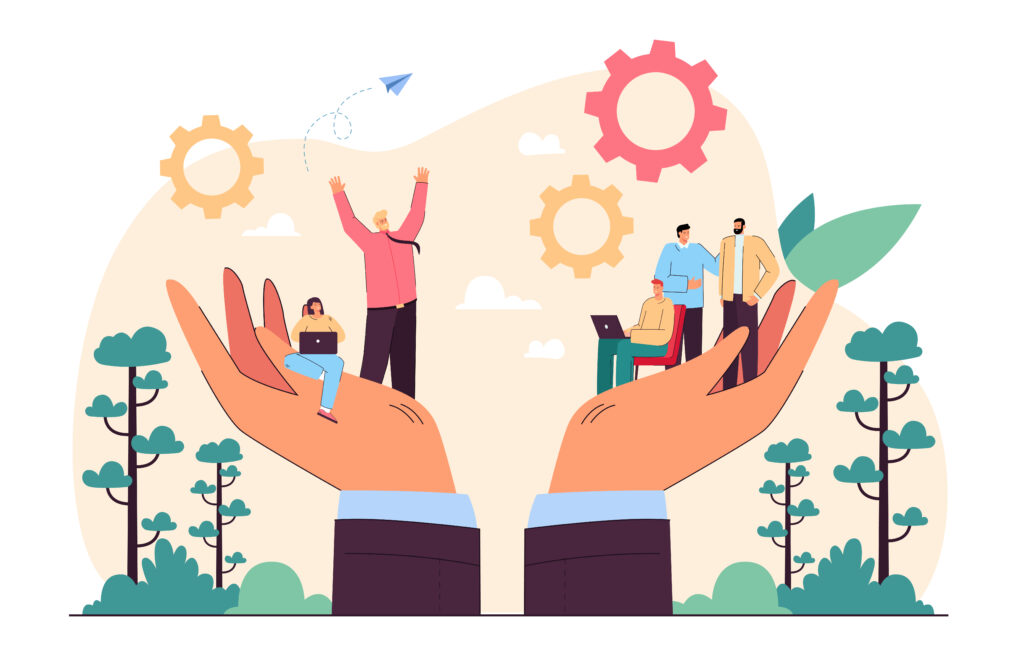“In any moment of decision, the best thing you can do is the right thing. The worst thing you can do is nothing.” – Theodore Roosevelt
Effective decision making is a critical skill that drives success in the workplace. Every day, professionals are faced with numerous choices that can impact their performance, productivity, and overall outcomes.
Picture this: you’re stranded on a deserted island, and your only companion is a coconut named Coco. It’s decision time—should you build a shelter first or hunt for food? In the workplace, the scenarios may not involve talking coconuts, but the essence of decision making remains the same. By employing techniques that sharpen your decision-making skills, you’ll become the MacGyver of choices, navigating the corporate wilderness like a pro.
But wait, what techniques are we talking about here? We’ll dive into the art of defining decisions with precision, gathering information like a squirrel hoarding acorns, and brainstorming alternatives that would impress even the most innovative minds. We’ll uncover the secrets of evaluating options without breaking a sweat, seeking input from the office oracle, and identifying risks before they hit you like a rogue wave.
So, buckle up and get ready for a rollercoaster ride through the world of effective decision making. Whether you’re an intern or a seasoned professional, these techniques will equip you with the superpowers needed to tackle any decision with confidence. By employing effective decision-making techniques, individuals can make informed choices that align with organizational goals and personal growth. In this article, we will explore various techniques for enhancing decision-making abilities at work.
- Define the Decision: Unveiling the “What” and “Why” Behind Your Choices
Imagine you’re in a labyrinth, and the only way to find your way out is by clearly defining your destination. The same principle applies to effective decision making at work. Before embarking on the decision-making journey, it is crucial to define the problem or situation that requires your attention.
Defining the decision involves peeling back the layers of complexity and understanding the core objectives, constraints, and desired outcomes. Think of it as shining a spotlight on the problem, so you can navigate through the darkness of uncertainty with confidence.
To start, ask yourself: What is the specific issue at hand? Why does it require a decision? By articulating the problem in clear and concise terms, you bring clarity to your thought process and eliminate any ambiguity that might cloud your judgment..
In a world full of choices, defining the decision serves as your North Star, guiding you through the vast sea of possibilities. Remember, the more precise your definition, the better equipped you are to tackle the decision head-on. Take the time to analyze and understand the underlying factors, and be specific in describing the problem. By doing so, you lay a solid foundation for the subsequent steps in the decision-making process.
“Your life changes the moment you make a new, congruent, and committed decision.” – Tony Robbins
- Gather Information: Unleashing the Sherlock Holmes Within
When it comes to effective decision making at work, information is your secret weapon. Just as Sherlock Holmes gathers clues to solve mysteries, you too must gather relevant information to make informed choices.
Gathering information involves a detective-like mindset, where you explore, investigate, and uncover the facts and insights needed to make sound decisions. Start by identifying credible sources of information, such as research papers, industry reports, or internal data. Cast a wide net to ensure you have a comprehensive understanding of the situation.
As you dive into the sea of information, be mindful of the quality and reliability of your sources. Look for reputable sources, cross-reference information, and consider the context in which the data was generated. The more reliable and accurate the information, the stronger your decision-making foundation.
Remember, information gathering is not a one-time event. It’s an ongoing process, especially in dynamic work environments. Stay curious and adapt to new information as it becomes available. Continuously update your knowledge and keep your finger on the pulse of relevant trends and developments.
- Identify Alternatives: Exploring the Menu of Possibilities
In the realm of decision making, having a range of alternatives is like having a diverse menu to choose from. Just as a restaurant offers various dishes to cater to different tastes, identifying alternatives allows you to explore a spectrum of options before settling on the most suitable choice.
To start, break free from the confines of conventional thinking and unleash your creativity. Engage in brainstorming sessions or solo ideation to generate a multitude of alternatives. Remember, quantity is key at this stage. Don’t hold back; let your imagination roam free and capture every idea, no matter how wild or unconventional it may seem.
Once you’ve gathered a substantial list of alternatives, it’s time to evaluate their feasibility and relevance. Consider factors such as resources required, time constraints, and potential risks and rewards. Narrow down the list by eliminating options that are impractical or don’t align with the defined problem and desired outcomes.
Remember, identifying alternatives is an exercise in exploration and possibility. So, embrace your inner explorer, venture into uncharted territories, and compile a tantalizing menu of options. The more alternatives you consider, the greater your chances of finding the perfect dish to satisfy your decision-making appetite. Bon appétit!
- Evaluate Options: The Art of Weighing Pros and Cons
Once you have a diverse array of alternatives laid out before you, it’s time to put on your analytical hat and evaluate each option. Evaluating options involves a careful assessment of their strengths, weaknesses, and potential impact on your desired outcomes.
Begin by establishing a set of criteria to evaluate the alternatives. These criteria could include factors such as feasibility, cost-effectiveness, alignment with organizational goals, and potential risks and rewards. Assign weights or priorities to each criterion based on their relative importance.
Next, assess each option against the established criteria. Consider the potential benefits and drawbacks of each alternative. Analyze the feasibility of implementation, the resources required, and the potential long-term implications. This analysis can be aided by tools such as decision matrices, cost-benefit analysis, or SWOT (Strengths, Weaknesses, Opportunities, Threats) analysis.
Seeking input from others can also enrich your evaluation process. Engage in discussions with colleagues, subject matter experts, or stakeholders who can offer valuable insights and diverse perspectives. This collaborative approach ensures a well-rounded evaluation and helps uncover blind spots or hidden opportunities.
“You are the CEO of your own life, and it’s up to you to make the decisions that will lead to your success.” – Oprah Winfrey
- Seek Input and Collaboration: The Power of Many Minds
In the world of decision making, seeking input and fostering collaboration is like inviting a team of experts to the table. It amplifies your perspective and taps into the collective intelligence and experience of others, leading to better-informed choices and innovative solutions.
When faced with a decision, don’t hesitate to reach out to colleagues, mentors, or subject matter experts. Seek their input and gather their insights. By actively listening to their perspectives, you gain fresh viewpoints and challenge your own assumptions. The diverse range of ideas and opinions can illuminate blind spots, uncover hidden opportunities, or highlight potential pitfalls that you may have overlooked.
Collaboration goes beyond merely soliciting input—it involves engaging in meaningful discussions and leveraging the collective expertise of the team. Embrace brainstorming sessions, workshops, or collaborative problem-solving exercises. Encourage an open and inclusive environment where everyone feels comfortable contributing their ideas and challenging the status quo.
- Assess Risks and Mitigation Strategies: Navigating the Decision-Making Minefield
In the complex world of decision making, risks lurk around every corner, ready to ambush even the most well-intentioned choices. That’s why it’s crucial to assess potential risks and develop effective mitigation strategies to safeguard your decisions.
Begin by identifying and evaluating the risks associated with each alternative. Consider both internal and external factors that could impact the success or outcome of your decision. Assess the likelihood and potential impact of each risk, considering both short-term and long-term consequences. The goal is to gain a clear understanding of the risk landscape you’re operating in.
Once risks are identified, it’s time to develop mitigation strategies. These strategies aim to minimize the likelihood and impact of risks or create contingency plans to address them effectively. This may involve allocating resources, setting up monitoring systems, or establishing protocols to handle potential setbacks.
In designing mitigation strategies, be proactive and consider a range of scenarios. Think of it as building a safety net that catches you when unexpected challenges arise. The key is to strike a balance between being cautious and taking calculated risks, as risk-taking is often an inherent part of growth and innovation.
- Consider Long-Term Implications: Looking Beyond the Immediate Horizon
In the fast-paced world of work, it’s easy to get caught up in the urgency of the present moment. However, effective decision making requires zooming out and considering the long-term implications of your choices.
When evaluating alternatives, think beyond immediate gains or short-term outcomes. Consider the ripple effects that your decision may have on various stakeholders, organizational goals, and future scenarios. Assess how the decision aligns with the overarching mission and vision of your organization.
Delve into the potential consequences, both positive and negative, that may unfold over time. Anticipate how the decision may impact relationships, resources, and the overall trajectory of your work. This holistic perspective ensures that your decision is not just a quick fix, but a strategic move that contributes to long-term success.
“In any decision-making process, it is important to rely on your instincts, but also to consider the advice and opinions of others.” – Elon Musk
- Trust Your Intuition: Unleashing the Inner Decision-Making Guru
Amidst the abundance of data, analysis, and expert opinions, there lies a quiet yet powerful voice within you—your intuition. Intuition is the gut feeling, the instinctive hunch that arises from a combination of subconscious knowledge and experience. It’s the inner decision-making guru that deserves your trust.
While logical reasoning and analysis have their place, there are times when your intuition can provide valuable guidance. It’s a culmination of all the information and experiences you’ve absorbed, processed, and stored over time. It’s a subtle whisper that can offer insights beyond what can be quantified or explained.
To tap into your intuition, create space for reflection and introspection. Practice mindfulness, meditation, or journaling to quiet the noise and listen to your inner voice. Pay attention to those fleeting thoughts or feelings that arise spontaneously when considering different options. Trust that your intuition is a valuable tool in your decision-making arsenal.
Intuition is particularly valuable when facing ambiguous or complex situations where there is no clear-cut answer. It can help you navigate uncertainty, identify hidden patterns, and uncover innovative solutions. It’s a source of creativity and ingenuity that can lead to breakthrough moments.
- Make Decisions and Take Action: Igniting the Spark of Action
Effective decision making is not just about thoughtful analysis and deliberation—it’s about translating your choices into tangible actions that drive progress and achieve desired outcomes. Once you have evaluated alternatives, mitigated risks, and considered long-term implications, it’s time to take the leap and make decisions that propel you forward.
The key to successful action lies in clarity and decisiveness. Avoid falling into the trap of analysis paralysis or endless deliberation. Trust in the process you’ve undertaken, believe in your abilities, and have confidence in the decisions you’ve made. Embrace the notion that there is no perfect choice and that taking action is the catalyst for growth and learning.
As you move from decision to action, establish a clear plan with defined milestones and timelines. Break down complex tasks into smaller, manageable steps that can be executed efficiently. Communicate the plan to relevant stakeholders and ensure everyone is aligned and equipped to contribute to its implementation.
Embrace a proactive and agile mindset. Adapt and adjust your approach as you encounter new information or unforeseen challenges. Be willing to course correct if necessary, but avoid succumbing to indecision or constantly second-guessing your choices. Trust that the decisions you’ve made are based on careful consideration and align with your goals.
- Evaluate and Learn: The Cycle of Growth and Improvement
In the realm of effective decision making, the journey doesn’t end with taking action. It’s equally important to engage in a process of continuous evaluation and learning. This cycle of reflection and improvement is what fuels growth and ensures that future decisions are even more informed and impactful.
Once you’ve implemented your decisions, take the time to assess their outcomes and evaluate their effectiveness. Reflect on the results, compare them to your initial expectations, and identify areas of success as well as areas for improvement. This evaluation process helps you gain insights into what worked well and what could be refined in the future.
Seek feedback from stakeholders, team members, or customers who were impacted by your decisions. Their perspectives can provide valuable insights and highlight blind spots that you may have missed. Embrace constructive criticism and view it as an opportunity for growth rather than a personal attack.
Remember, evaluation and learning are not about dwelling on past mistakes or seeking perfection. It’s about adopting a growth mindset and leveraging every experience as an opportunity for progress. Embrace the cycle of evaluation and learning, and watch as your decision-making skills evolve, leading to better outcomes and greater success.
Also read about 7 Ways to enhance public speaking skills.
You can check out few books to learn more about effective decision making in life and business:
“Thinking, Fast and Slow” by Daniel Kahneman: This book explores the two systems of thinking that drive our decision-making processes: the intuitive, fast-thinking system and the logical, slow-thinking system. Kahneman delves into cognitive biases and provides insights into how our minds work when making choices.
Read Book Now: E-book | Paperback | Audiobook
“Decisive: How to Make Better Choices in Life and Work” by Chip Heath and Dan Heath: The Heath brothers present a framework for effective decision making based on four key principles: widening your options, reality testing assumptions, attaining distance for better perspective, and preparing for potential regrets. They offer practical strategies and real-life examples to help readers make better choices.
Read Book Now: E-book | Paperback | Audiobook
“Thinking in Bets: Making Smarter Decisions When You Don’t Have All the Facts” by Annie Duke: Annie Duke, a professional poker player, applies her expertise in decision making under uncertainty to everyday life. She discusses concepts like probabilistic thinking, embracing uncertainty, and learning from outcomes to improve decision making.
Read Book Now: E-book | Paperback | Audiobook
“Nudge: Improving Decisions About Health, Wealth, and Happiness” by Richard H. Thaler and Cass R. Sunstein: Thaler and Sunstein explore the concept of “nudging” as a way to influence and improve decision making. They provide insights into behavioral economics, choice architecture, and how small changes in how choices are presented can lead to better outcomes.
Read Book Now: E-book | Paperback | Audiobook
“Predictably Irrational: The Hidden Forces That Shape Our Decisions” by Dan Ariely: Ariely explores the irrational behaviors that influence our decision making. Through engaging experiments and anecdotes, he reveals the underlying psychological factors that drive our choices and offers insights into how to make better decisions in light of these biases.
Read Book Now: E-book | Paperback | Audiobook




